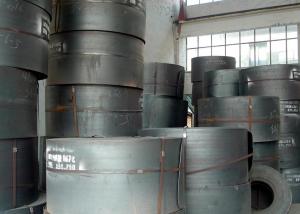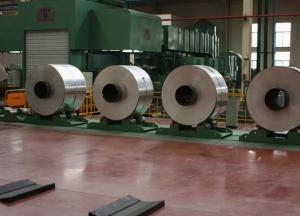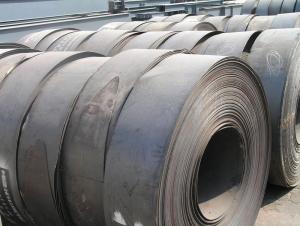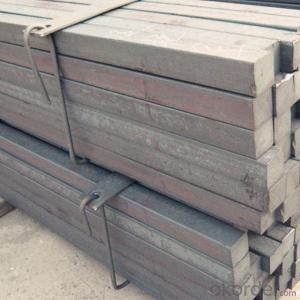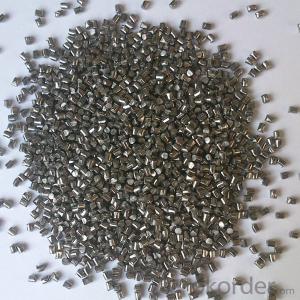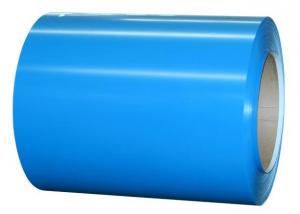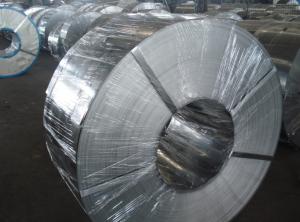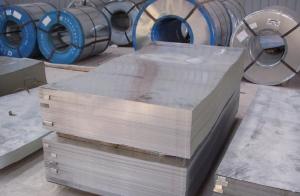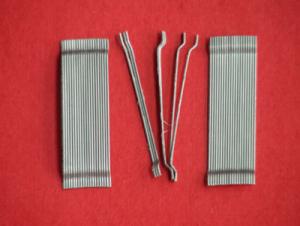Good Quality Hot Rolled Steel GB, 60mm-100mm
- Loading Port:
- China Main Port
- Payment Terms:
- TT or L/C
- Min Order Qty:
- 50 tons m.t.
- Supply Capability:
- 50000 Metric Tons Per Month m.t./month
OKorder Service Pledge
OKorder Financial Service
You Might Also Like
Specification Of Good Quality Hot Rolled Steel GB, 60mm-100mm
|
|
Thickness |
Width |
Length |
Coil Inside Diameter |
|
HOT ROLLED STEEL COIL |
1.50~25.0mm |
600~2000mm |
|
762mm |
|
HOT ROLLED STEEL STRIP |
1.50~20.0mm |
30~720mm |
|
762mm |
|
HOT ROLLED STEEL PLATE |
6.00~700mm |
500~4500mm |
4000~18000mm |
|
|
HOT ROLLED STEEL SHEET |
1.20~25.0mm |
50~2000mm |
0~18000mm |
|
|
HOT ROLLED STEEL CHEQUERED |
1.40~10.0mm |
900~1500mm |
0~18000mm |
|
Standard &Grade of Good Quality Hot Rolled Steel GB, 60mm-100mm
|
|
JIS |
ASTM |
SAE |
EN |
|
Commercial Quality |
G3131 SPHC |
A569 A635 A659 A1011 CS Type A, B, C |
1006~1025 |
10111 DD11 |
|
Drawing Quality |
G3131 SPHD |
|
1006~1010 |
10111 DD12 |
|
Deep Drawing Quality |
G3131 SPHE |
A622 A1011 DS Type A, B |
1006~1010 |
10111 DD13 DD14 |
|
General Structure (T.S.<490N/mm2) |
G3101 SS330 SS400 G3106 SM400A G3132 SPHT1 SPHT2 SPHT3 |
A36 A283 GR.C A570 GR.30~40 A1001 SS GR.30~40 |
1010~1025 |
|
|
General Structure (T.S.≥490N/mm2) |
G3101 SS490 G3106 SM490A SM490YA G3132 SPH4 |
A570 GR.45~50 A607 GR.45~70 A1011 SS GR.45,50 A1011 HSLAS GR.45~70 |
J1392 050X |
|
Definition of Good Quality Hot Rolled Steel GB, 60mm-100mm
Rolled to its final dimensions while it’s hot enough to scale, our hot-rolled steel is an amalgamation of the various qualities of steel. It can be in the form of plates, sheets and coils. Our Hot-Rolled Steel Sheets and Coils are applied to a wide range of uses such as automobile, electrical appliance, machinery manufacturing, container manufacturing, shipbuilding, bridge, pipeline, and receive high acclaim from our customers for its excellent quality.


Usage/Application Of Good Quality Hot Rolled Steel GB, 60mm-100mm
As raw material for:
Container &Pipe Production
Carbon Structural Steel
Low Alloy Steel
High Quality Carbon Structural Steel
Atmospheric Corrosion Resistant Steel
Low Carbon Steel (Commercial Quality, Drawing Quality, Deep Drawing Quality)
Packaging & Delivery of Good Quality Hot Rolled Steel GB, 60mm-100mm
The packing of coils consists of anti-damp paper, PVC film, hardboard paper, steel box, strapped with steel strips, fitted with locks and edge protectors and guarantees the optimal condition of the delivered goods. Each coil can be additionally fitted with wooden/steel skids(eye to the side) or wooden pallets(eye to the sky).
Bulk shipment packed with steel belt.
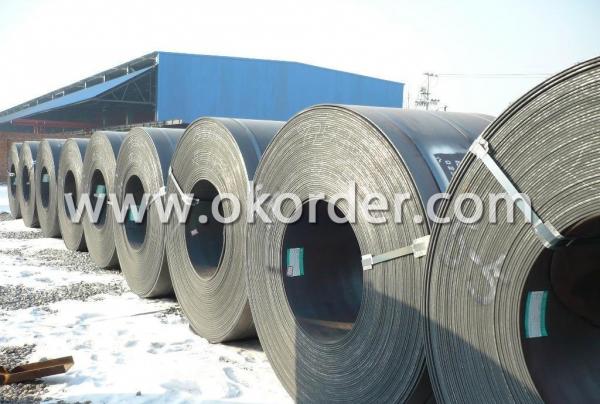
- Q:How is steel used in the production of laboratory furniture?
- Steel is commonly used in the production of laboratory furniture due to its durability, strength, and resistance to corrosion. It is used to make sturdy frames for lab benches, cabinets, and shelves, providing a reliable and long-lasting support system for the equipment and materials used in laboratory settings. Additionally, steel can be easily sterilized and cleaned, making it a hygienic choice for laboratory furniture.
- Q:What are the different types of steel reinforcements used in construction?
- There are several types of steel reinforcements used in construction, including bars, mesh, and fibers. Steel bars, also known as rebar, are commonly used to provide tensile strength to reinforced concrete structures. They come in various shapes and sizes, such as round, square, and deformed bars. Steel mesh, or welded wire fabric, consists of interconnected steel wires forming a grid pattern and is used to reinforce concrete slabs, walls, and foundations. Steel fibers, on the other hand, are small filaments made of steel and are added to concrete to enhance its structural integrity and resistance to cracking. These different types of steel reinforcements play a crucial role in strengthening concrete structures and ensuring their durability.
- Q:How is steel plate cut and shaped?
- Steel plate is typically cut and shaped using various methods such as plasma cutting, laser cutting, or shearing. Plasma cutting involves the use of a high-velocity jet of ionized gas to melt and remove metal, while laser cutting utilizes a high-powered laser beam to vaporize the material. Shearing, on the other hand, involves the use of a machine that applies a significant amount of force to cut through the steel plate. These techniques allow for precise and efficient cutting and shaping of steel plates to meet specific design requirements.
- Q:What are the different types of steel bars and their applications?
- There are several types of steel bars, each with their own distinct characteristics and applications. Some common types include mild steel bars, deformed steel bars, stainless steel bars, and alloy steel bars. Mild steel bars are widely used in construction due to their affordability and versatility. They are commonly used for general reinforcement purposes in buildings, bridges, and other structures. Deformed steel bars, on the other hand, have ridges or deformations on their surface which enhance their bonding with concrete. These bars are extensively used in reinforced concrete structures such as columns, beams, and slabs. Stainless steel bars are highly resistant to corrosion and are used in environments where corrosion is a concern, such as in marine applications, food processing industries, and chemical plants. Alloy steel bars are made by adding different alloying elements to enhance specific properties like strength, hardness, and resistance to wear and tear. They are commonly used in the manufacturing of automobile parts, machinery, and tools. In summary, the different types of steel bars cater to various applications based on their specific properties, making them suitable for a wide range of industries and construction projects.
- Q:How are steel pipes used in the transportation of natural gas?
- Steel pipes are commonly used in the transportation of natural gas due to their strength, durability, and ability to withstand the high pressure and corrosive nature of the gas. These pipes are used to create a reliable and efficient network that transports natural gas from production facilities to distribution points and eventually to consumers, ensuring a safe and efficient supply of energy.
- Q:How does steel pipe threading work?
- Steel pipe threading is a process where a machine is used to cut threads into the ends of steel pipes. The machine grips the pipe securely and rotates it while simultaneously cutting or forming the threads using a die or cutting tool. This creates a threaded connection that can be used to join pipes together or attach fittings, ensuring a tight and secure seal. Threading is commonly used in plumbing, construction, and industrial applications.
- Q:What are the applications of steel forgings?
- Steel forgings have a wide range of applications in various industries, including automotive, aerospace, construction, and oil and gas. They are commonly used for manufacturing components that require high strength, durability, and resistance to wear and tear. Some specific applications include crankshafts, gears, axles, connecting rods, turbine blades, and structural components in buildings and bridges.
- Q:How do steel products contribute to the retail and commercial sector?
- Steel products contribute to the retail and commercial sector in multiple ways. Firstly, steel is widely used in the construction industry to build retail and commercial buildings, providing durable and sturdy structures. Steel beams, columns, and frames are essential for supporting the infrastructure, ensuring safety and longevity. Moreover, steel is a popular material for shelving units, display racks, and storage systems used in retail stores and warehouses. Its strength and versatility allow for efficient storage of products, maximizing space utilization and facilitating easy access to merchandise. In addition, steel plays a crucial role in the manufacturing of various retail products. From appliances and electronics to furniture and fixtures, steel is used in the production of a wide range of items. Its durability and aesthetic appeal contribute to the quality and attractiveness of these products, enhancing their marketability. Furthermore, steel is essential for transportation and logistics in the retail and commercial sector. From shipping containers and cargo containers to vehicles and trailers, steel is used extensively in the transportation of goods. Its strength and resistance to corrosion ensure the safe and efficient movement of products across different locations. Overall, steel products make significant contributions to the retail and commercial sector by providing reliable infrastructure, efficient storage solutions, high-quality retail products, and reliable transportation systems.
- Q:How is steel pipe welded for structural applications?
- Steel pipe is commonly welded for structural applications using various welding techniques such as electric resistance welding (ERW), submerged arc welding (SAW), or gas metal arc welding (GMAW). These methods involve applying heat and pressure to join two or more sections of steel pipe together, ensuring a strong and durable bond.
- Q:How are steel products used in the chemical industry?
- Steel products are widely used in the chemical industry for various applications such as storage tanks, pipes, and equipment due to their high strength, durability, and resistance to corrosion. These steel products help store and transport chemicals safely and efficiently, ensuring the integrity of the substances being handled. Additionally, steel is often used in the construction of chemical plants and refineries, providing a stable and secure infrastructure for chemical processes.
1. Manufacturer Overview |
|
|---|---|
| Location | Shandong, China |
| Year Established | 1958 |
| Annual Output Value | |
| Main Markets | Mid East Northern Europe North America Eastern Asia Africa Eastern Europe Southeast Asia Western Europe Southern Europe |
| Company Certifications | ISO 9001 |
2. Manufacturer Certificates |
|
|---|---|
| a) Certification Name | |
| Range | |
| Reference | |
| Validity Period | |
3. Manufacturer Capability |
|
|---|---|
| a)Trade Capacity | |
| Nearest Port | Tianjin; Qingdao |
| Export Percentage | 80% |
| No.of Employees in Trade Department | 100People |
| Language Spoken: | English; Chinese; Korean |
| b)Factory Information | |
| Factory Size: | |
| No. of Production Lines | |
| Contract Manufacturing | OEM Service Offered; Design Service Offered |
| Product Price Range | Average |
Send your message to us
Good Quality Hot Rolled Steel GB, 60mm-100mm
- Loading Port:
- China Main Port
- Payment Terms:
- TT or L/C
- Min Order Qty:
- 50 tons m.t.
- Supply Capability:
- 50000 Metric Tons Per Month m.t./month
OKorder Service Pledge
OKorder Financial Service
Similar products
New products
Hot products
Related keywords
